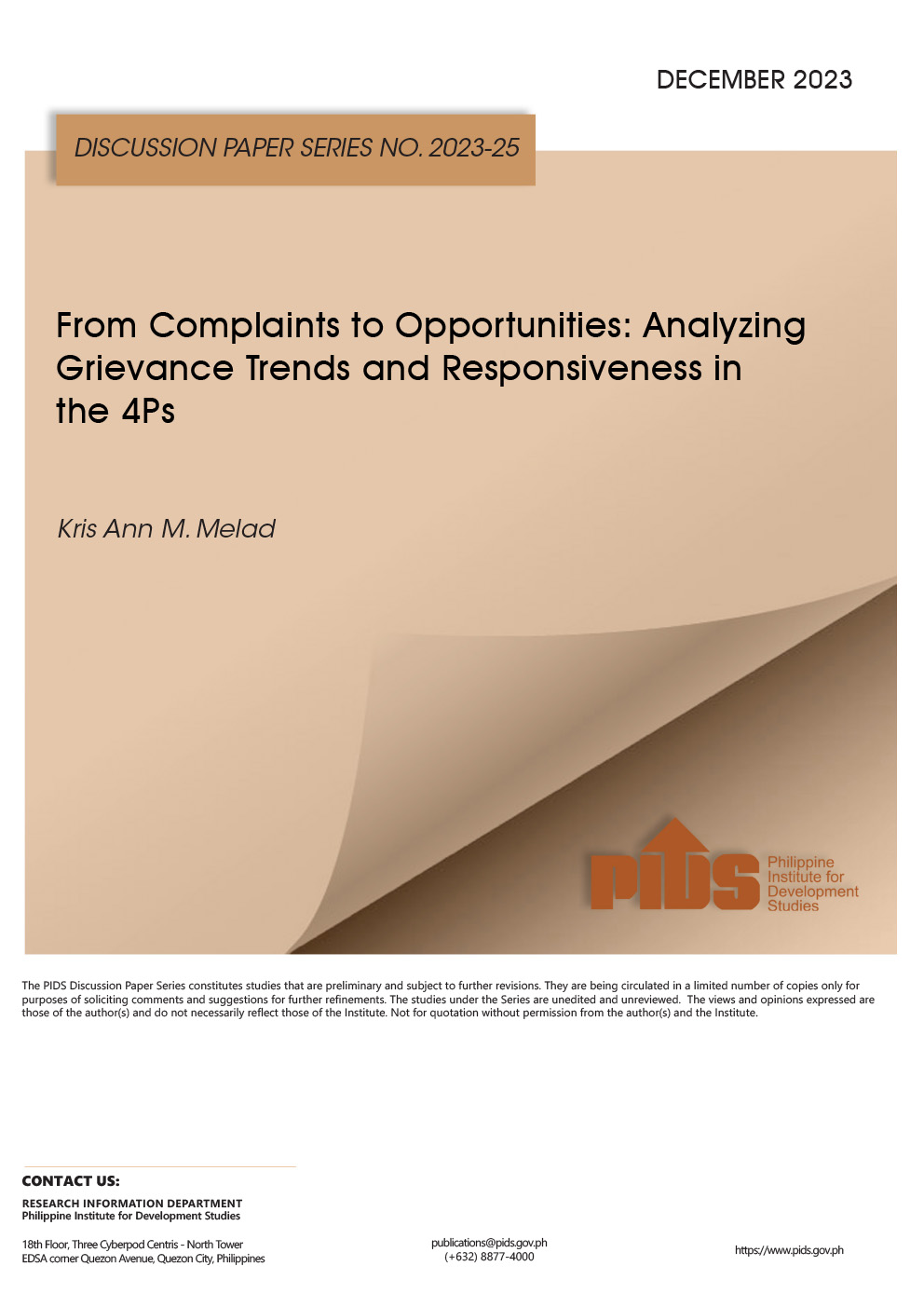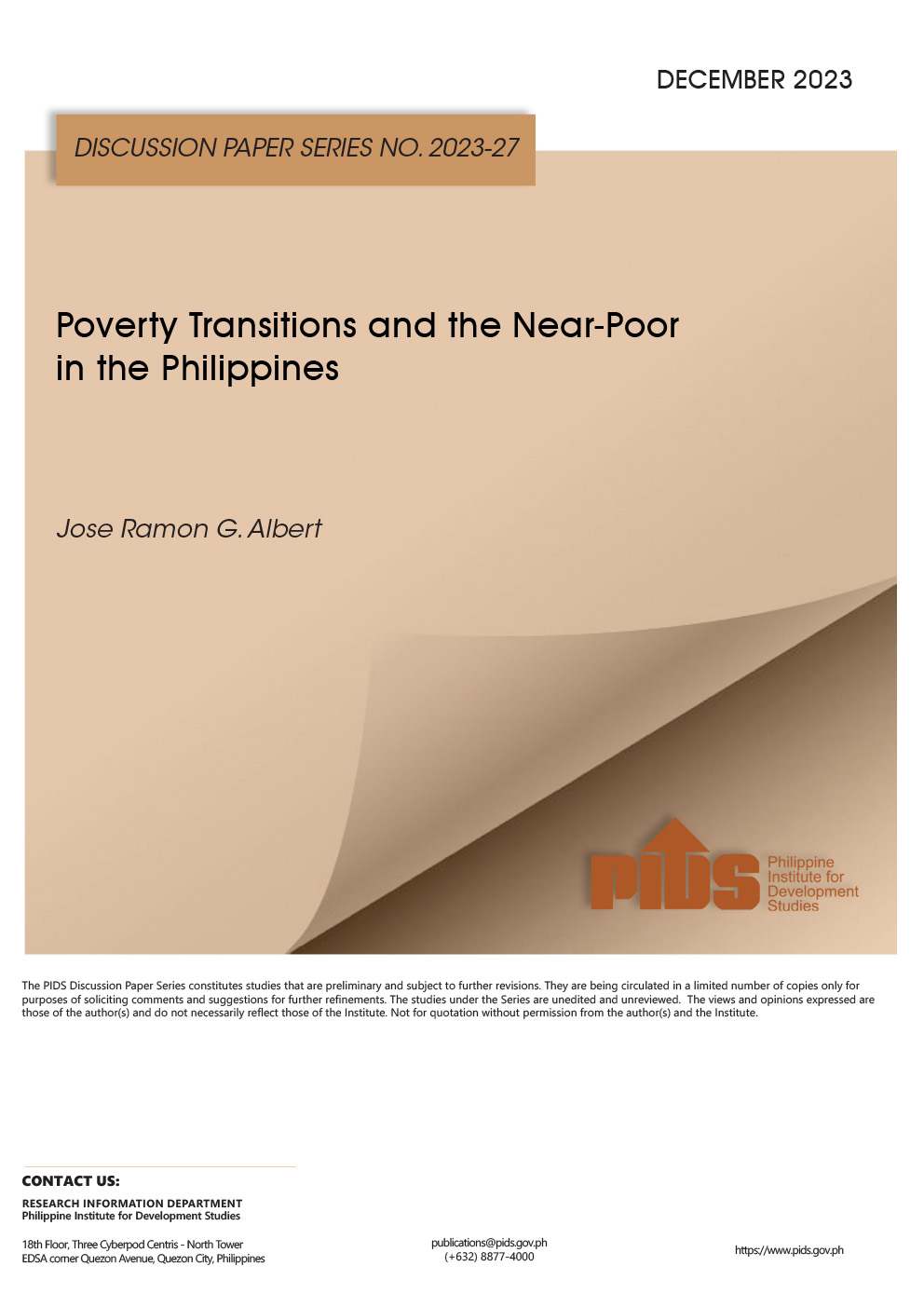Education and cash transfers are pro-poor programs that can help lift millions from poverty, but inefficient spending may cripple these programs, according to an expert.
In a news statement released by state-owned think tank Philippine Institute for Development Studies (PIDS), Nanak Kakwani, a poverty expert from the University of New South Wales, said the country has many programs that can help poor Filipinos escape poverty.
This includes the conditional- cash transfers (CCTs), which aim to improve enrolment rates and address health issues of young Filipinos and mothers. These include the efforts to improve the education system, the most recent of which is the free tuition in state universities and colleges.
“He also suggested investing in safety-net programs, but warned against inefficient spending, saying that the government should be able to utilize its budget to fund other social-welfare programs and make them more beneficial, especially to the poor,” PIDS said.
In the past years, the Philippines launched attempts to improve the educational system in the country.
In 2014 the government expanded the age coverage of its CCT program, the Pantawid Pamilyang Pilipino Program (4Ps) to 18 years old to give poor children a better chance at finishing high school. Under the 4Ps, children who are part of the program should be enrolled in school.
In 2016 the government, under the Department of Education, fully implemented the K to 12 program to make the Philippine basic education system on a par with international standards as it increased the number of years for basic education to 12.
Furthermore, in 2017 President Duterte signed a law that provides free tuition for students of SUCs in the country, despite the opposition of some economists.
“Government transfers are ‘highly pro-poor’ and are very effective in reducing poverty,” Kawani said.
In 2017 PIDS Senior Research Fellows Aniceto C. Orbeta Jr. and Vicente B. Paqueo said paying for the tuition of students in SUCs will benefit mostly rich students.
In a Policy Note, Orbeta and Paqueo said the bulk of students studying in public higher education institutions (HEIs) are mostly from higher income groups.
Data from the Philippine Statistics Authority (PSA) showed that students from the poorest and second poorest income households only account for 11 percent in 1999 and 12 percent in 2014 of enrollees in HEIs.
This trend had not changed much through the years despite the expansion of enrollment in public HEIs from 35 percent in 1999 to 52 percent in 2014.
Apart from being anti-poor, paying for the tuition of SUC students will not guarantee that these students will complete their degrees because the biggest expense in collegiate education is living allowance and not the tuition itself.
The authors said under the Students’ Grants-in-Aid Program for Poverty Alleviation (SGP-PA), which was designed to provide full funding for college students belonging to 4Ps beneficiary families, provides P60,000 annually.
This amount consists of P20,000 or P10,000 per semester for tuition; P35,000 or P3,500 per month for 10 months for living allowance; and P5,000 or P2,500 per semester for instructional materials.
Further, the authors said the annual budget of the tuition subsidy worth P33 billion can only help 197,828 poor students or 12 percent from the bottom 20 percent of households.
If the budget is instead used for the Unified Student Financial Assistance System for Tertiary Education (UniFast), using the SGP-PA estimates, the budget can help as much as 549,522 students from poor households nationwide.
The authors said under the SGP-PA, which designed to provide full funding for college students belonging to 4Ps program beneficiary families, provides P60,000 annually.
There are also dangers in case the government fails to sustain financing particularly when demand for free tertiary education in SUCs increases.
In a news statement released by state-owned think tank Philippine Institute for Development Studies (PIDS), Nanak Kakwani, a poverty expert from the University of New South Wales, said the country has many programs that can help poor Filipinos escape poverty.
This includes the conditional- cash transfers (CCTs), which aim to improve enrolment rates and address health issues of young Filipinos and mothers. These include the efforts to improve the education system, the most recent of which is the free tuition in state universities and colleges.
“He also suggested investing in safety-net programs, but warned against inefficient spending, saying that the government should be able to utilize its budget to fund other social-welfare programs and make them more beneficial, especially to the poor,” PIDS said.
In the past years, the Philippines launched attempts to improve the educational system in the country.
In 2014 the government expanded the age coverage of its CCT program, the Pantawid Pamilyang Pilipino Program (4Ps) to 18 years old to give poor children a better chance at finishing high school. Under the 4Ps, children who are part of the program should be enrolled in school.
In 2016 the government, under the Department of Education, fully implemented the K to 12 program to make the Philippine basic education system on a par with international standards as it increased the number of years for basic education to 12.
Furthermore, in 2017 President Duterte signed a law that provides free tuition for students of SUCs in the country, despite the opposition of some economists.
“Government transfers are ‘highly pro-poor’ and are very effective in reducing poverty,” Kawani said.
In 2017 PIDS Senior Research Fellows Aniceto C. Orbeta Jr. and Vicente B. Paqueo said paying for the tuition of students in SUCs will benefit mostly rich students.
In a Policy Note, Orbeta and Paqueo said the bulk of students studying in public higher education institutions (HEIs) are mostly from higher income groups.
Data from the Philippine Statistics Authority (PSA) showed that students from the poorest and second poorest income households only account for 11 percent in 1999 and 12 percent in 2014 of enrollees in HEIs.
This trend had not changed much through the years despite the expansion of enrollment in public HEIs from 35 percent in 1999 to 52 percent in 2014.
Apart from being anti-poor, paying for the tuition of SUC students will not guarantee that these students will complete their degrees because the biggest expense in collegiate education is living allowance and not the tuition itself.
The authors said under the Students’ Grants-in-Aid Program for Poverty Alleviation (SGP-PA), which was designed to provide full funding for college students belonging to 4Ps beneficiary families, provides P60,000 annually.
This amount consists of P20,000 or P10,000 per semester for tuition; P35,000 or P3,500 per month for 10 months for living allowance; and P5,000 or P2,500 per semester for instructional materials.
Further, the authors said the annual budget of the tuition subsidy worth P33 billion can only help 197,828 poor students or 12 percent from the bottom 20 percent of households.
If the budget is instead used for the Unified Student Financial Assistance System for Tertiary Education (UniFast), using the SGP-PA estimates, the budget can help as much as 549,522 students from poor households nationwide.
The authors said under the SGP-PA, which designed to provide full funding for college students belonging to 4Ps program beneficiary families, provides P60,000 annually.
There are also dangers in case the government fails to sustain financing particularly when demand for free tertiary education in SUCs increases.











